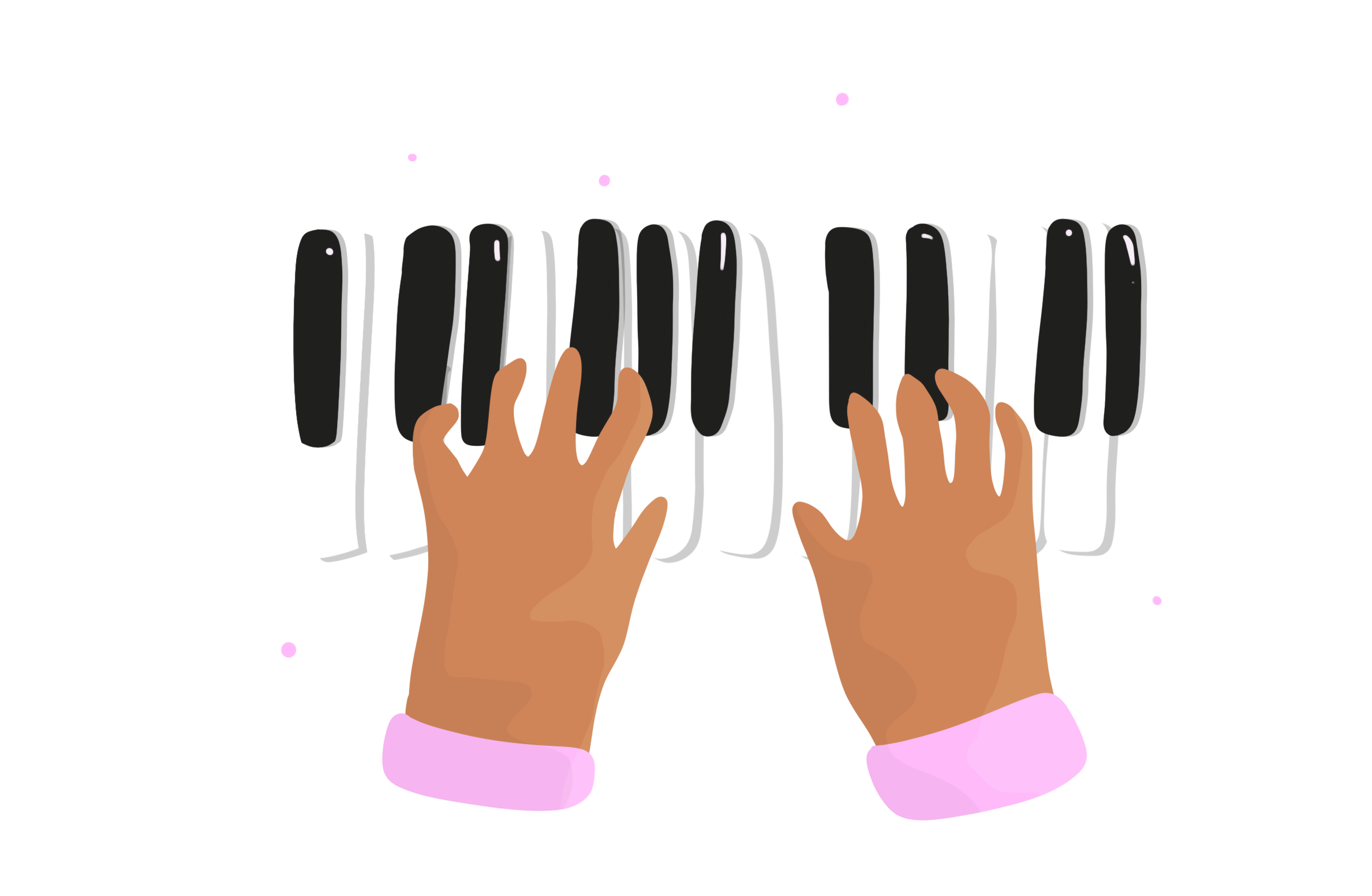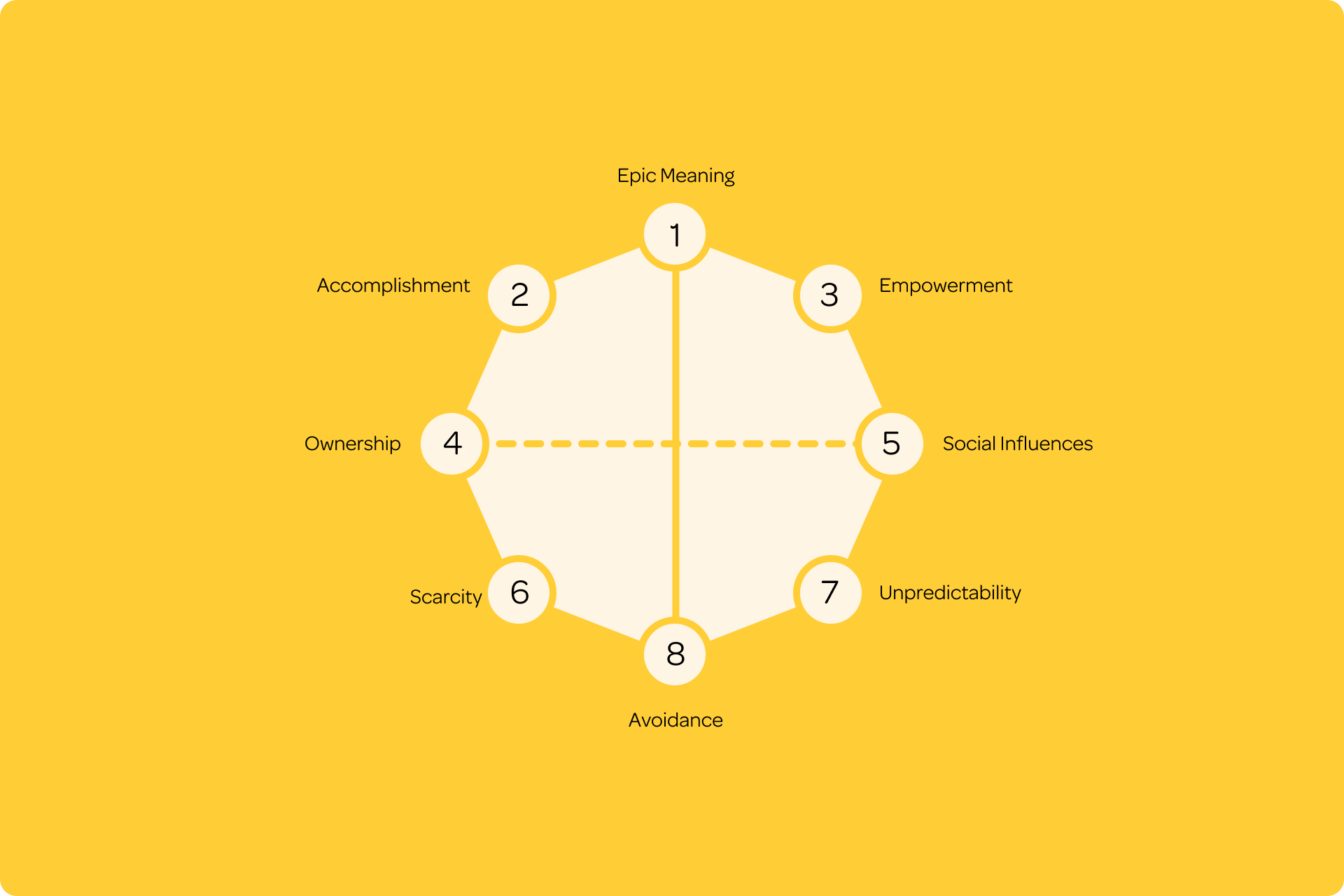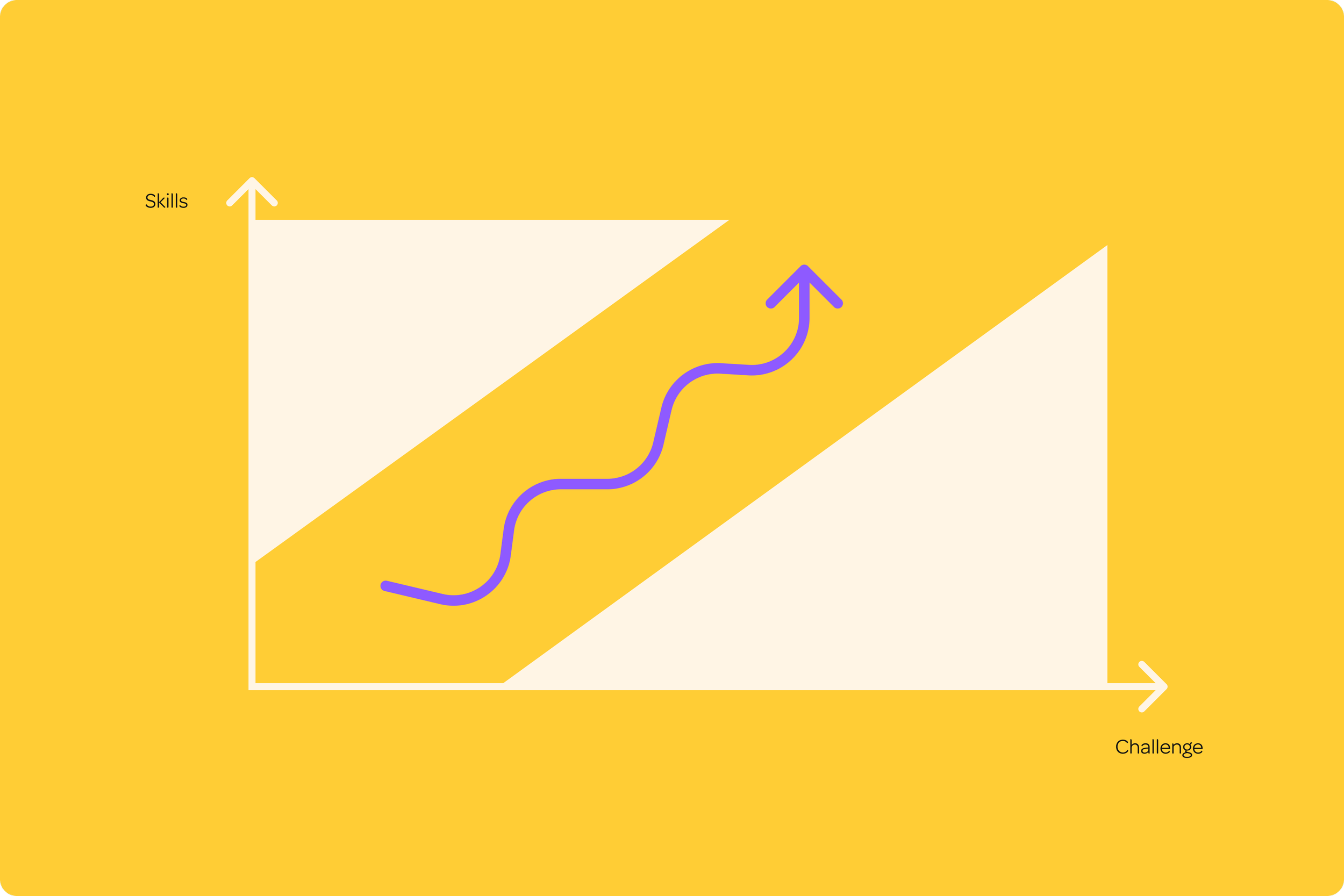How Skills Café motivated organisational learners to master behavioural skills
Learner
Employees of a large construction conglomerate in India
Topic
Behavioural skills
Format
Digital Games + Gamified LXP - Flogames
Skills Café delivers highly engaging learning experiences through Flogames, a library of digital games and simulations.
While digital learning offers a scalable approach to upskilling, the widespread perception of e-learning as unengaging often leads to low participation and completion rates.
This case study explores how Flogames tackled the problem of learner motivation through a game-based learning competition, Simuquest, which engaged over 3000+ learners.
What’s Inside
Problem (2 mins read):
Understanding the pain points of a corporate learner
Process (5 mins read):
Designing for motivation and mastery using games
Implementation (5 mins read):
Breaking down the 3 key elements
Impact (3 mins read):
Average 5 replays. Even on weekends!
Problem
Understanding pain points of a corporate learner
Self-paced e-learning is a significant part of the learning strategy for most corporate organisations. Corporate learners prefer it for ease of access, repeatability and self-paced nature. It offers scalable and low-cost solutions for the L&D team with more points for measuring learning engagement.
However, here is the unfortunate reality.
Completion rates are abysmal; they tend to average around 15% (Hollands & Kazi, 2018), with abandonment rates often being as high as 96% - numbers which have stayed more or less constant through the years (Reich & Ruipérez-Valiente, 2019). In an interview with a stakeholder - it was identified that an organisation provides many self-paced courses to the learners but remains under-utilised throughout the year.
A large construction conglomerate in India approached Skills Café on how they could offer self-paced learning where learners wanted to learn, seek mastery and drive engagement on their own.
However, what advantages does self-paced learning brings as opposed to a typical instructor-led approach?
From a learner’s perspective, a self-paced course would allow them to fit the learning into their busy schedules. From an organisational perspective, a self-paced journey would mean they could help employees address their learning needs as soon as they arise without waiting for an appropriate batch size. It would also reduce the hassle of finding a time that worked for everyone, blocking calendars and getting permission to pull employees away from their work for 2 – 4 hours.
As a first step, Skills Café asked the question - Who are these learners? What are their background, needs, and behaviours?
Here's what they learned:
Employees profile:
Engineers, managers, ICs, sales and non-sales.
Age range:
25-60, average age: around 35.
Background:
The employees were tight on schedule, overworked, and had little motivation to learn beyond their direct domain – let alone seek mastery.
-
Employees of a large construction conglomerate in India, predominantly in individual contributor and mid-manager roles.
Most employees have an engineering background, which implies a certain level of analytical thinking and problem-solving skills, but a lack of a deep focus on behavioural skills as it is not generally part of their training.
-
Highly Competitive: Indian culture, particularly the corporate sector, is known for its competitive spirit. In India, competition is not just a game but a cultural ethos that runs deep. Whether academic pressure from an early age or the friendly neighbourhood cricket match, competing and emerging victorious holds significant value.
Desire for Engaging Content: The learners found traditional e-learning through videos and e-books dull and sought something more engaging and interactive.
Desire for Mastery: Despite lacking engagement with existing (L&D) offerings, the employees desired mastery and self-improvement. In retrospect, this is indicated by the organisation's request for a self-paced learning solution that encourages mastery and engagement.
-
Low engagement with existing self-paced courses, indicating a disconnect between the current L&D offerings and the learners' preferences.
A tendency to delegate mandatory e-learning to others, highlighting a lack of perceived value in the existing L&D offerings.
“My wife, who is an HR manager, asked me to finish her mandatory video lessons and click through the course.”
The Challenge
The challenge was creating a solution that would drive high employee motivation while being versatile enough to be used across different departments and business units. The solution needed to focus on building behavioral skills rather than serving as a mere proxy for engagement, like playing a game. This required a careful balance between making the learning activities engaging and competitive while ensuring they delivered meaningful skill development.
This seemed like a complex problem to solve.
How did Skills Café go about arriving at a solution?
Process
Designing for motivation and mastery using games
Most employees were accustomed to attending mandatory training and skimming through videos and content to fulfil specific requirements. Skills Café realised this was also a perception issue. If the employees felt that this was another “organisational” requirement, this might lead to disengagement from the beginning and, consequently, low adoption.
Their approach was simple - instead of making it a push-based top-down approach, could they make it more pull-based and inviting?
What if the employees had an active role in deciding whether they learnt, what they learnt, when, and even how they learnt something? This was not something they were typically used to.
Could that lead to higher motivation?
Skills Café had to make clear design decisions to tackle this problem.
Here’s what they did (in no particular order):
-
They asked: When do people push themselves the most?
The world records in athletics are built in competitions, not solo practice sessions. People want to go to the Olympics and break the world record. Competition and mastery are twin brothers -it is what drives many people to push their boundaries and improve themselves. In addition, they realised that a cultural element was also at play here. Employees were inherently competitive, and departments had strong self-identities, too.
Their hypothesis was:
Competition would boost the social aspect of self-paced learning and drive mastery orientation.
-
Most self-paced training could be endless with no clear start or finish line. A competition would require it to be time-bound, and this fixed duration would create a sense of urgency and encourage learners to complete the training within the given timeframe. At the end of the competition, there could be a ceremony where people and departments who exhibited specific behaviours would be felicitated.
-
Allowing campaigning, competition and word-of-mouth engagement to drive learning uptake rather than an organisational mandate.
-
The general perception of e-learning is often passive involvement through a set of videos coupled with some multiple-choice quizzes. They wanted to change this perception and promote more active learning forms. Games could enhance engagement and retention and offer real-world simulations, providing immediate feedback and promoting critical thinking in a risk-free environment.
-
Skills Café had a comprehensive menu of games tied to specific behavioural skills. Instead of providing all these games, the company had to select the ones that best fit their needs and values. The game narratives and scenarios mirrored real-world challenges in the industry. They mapped these simulations to the 10 core values of the company to support culture building in the company.
-
Instead of fixed learning paths, learners could choose games based on their interest areas from the whole catalogue of games available across 10 organisational competencies.
-
Social recognition and celebration are critical, especially in large organisations, and people often overlook this component while designing e-learning. It could act as a strong motivator by assigning points, badges, and leaderboards for exhibiting specific behaviours and tying that to public acknowledgement and appreciation.
-
They recognised constant interaction with the participants was crucial for high participation and usage. Teasers were sent out before the start of the competition to create a sense of curiosity and excitement and encourage employees to register for the competition. A large-scale virtual launch event was held, with over 2000 registered participants. Senior leaders from the organisation spoke about the importance of honing new skills and highlighted how the simulations would provide a fun and safe way for them to practice these skills. All questions about the competition, the portal, the scoring and rewards criteria were also clarified during this call. After the launch, eye-catching emails were sent daily – highlighting the leaderboard, encouraging participation and driving everyone to keep going.
During the solutioning process, they leveraged 3 frameworks and theories extensively:
-
Context:
Flow Theory describes a state where people are so deeply immersed and focused on an activity that they lose track of time and external distractions, leading to peak performance and enjoyment. The objective was to engage learners in a state of 'flow,' where they are fully immersed and derive intrinsic joy from the learning process.
Process:
Designed games that matched the learner's skill level with increasing difficulty levels, aiming to keep them in the 'flow' state.
Modules were designed to be 15-20 minutes long to help sustain attention and engagement.
-
Context:
The Octalysis framework is a gamification design framework that breaks down human motivation into eight core drives, guiding the creation of engaging experiences. Skills Café specifically focused on 4 core drives - 'Social Influence and Relatedness,' 'Empowerment of Creativity and Feedback,' 'Unpredictability and Curiosity,' and 'Development and Accomplishment.'
Process:
'Social Influence and Relatedness' through leaderboards and social badges.
'Empowerment of Creativity and Feedback' through designing narrative branching games that require decision-making.
'Unpredictability and Curiosity' were added through the games’ random bonuses and surprise elements.
'Development and Accomplishment' was catered to through a mastery score and achievement badges.
-
Context:
The MDA Framework breaks down games into three key components, Mechanics (rules), Dynamics (behavioural patterns), and Aesthetics (emotional responses), to help in understanding and designing better games.
Process:
Mechanics: Designed simple points and badges system and added the complexity of narrative branching.
Dynamics: Attribute wise scoring in the came focuses learners on conceptual learning. Implemented leaderboards, game-bingeing opportunities, and replays to ensure system-wide engagement.
Aesthetics: Paid attention to the learners' emotional responses—pleasure in achieving high scores, dissatisfaction in falling behind, etc.
Now, Skills Café decided to test this out. Could they combine the elements of games, people, theories, and some basic rules to create a learning competition?
The Final Competition - Simuquest 2023
After understanding the learner persona and corporate context, making certain design decisions, and being informed by the above theories it led to the genesis of Simuquest 2023.
A 3-week-long competition
Individual and departmental leaderboards - open to participation from all departments.
Modules: Learning games of 15-20 minutes with additional learning handouts.
Opportunities to play more than once and improve scores.
In addition to this, there were special awards and badges - who would also be felicitated during an in-person celebration ceremony.
3 stages of the Learner Journey
1. Pre-Program
Internal promotion of competition: Starting from 2 weeks in advance, the learner received emails and promotions on the internal social network and internal LMS about the competition from CHR-L&D.
Different Unit-HR heads were involved in promoting the competition internally.
3. Post Program
Competition comes to halt after 3 weeks and final winners across multiple categories are announced
During an organisation wide HR event winners are felicitated for their performance. Every participant is given a participation certificate and credit for completing their learning goals of the year.
The Flogames Learning Portal is open for learners to access even after the competition to complete and refresh their learning. The competition leaderboard is deactivated but an overall leaderboard is now activated.
What were the parts that helped employees achieve mastery?
Let’s dig deeper.
1. The People: The Organisation
What did they learn?
-
As the participants were also representing their departments, the ‘collaborate to compete’ aspect stood out, and people wanted their teams to do well, which helped raised the bar higher.
-
A large percentage of learners had an engineering background, and the elements of problem-solving stood out to them.
2. The Games: Flogames
Flogames is a library of 100+ learning games on behavioural skills like interpersonal excellence, managerial excellence, communication, etc.
There were 3 parts to this:
Narrative Storytelling: Each game module was designed around a narrative that mirrored real-world challenges in the construction industry, from project management to client interactions. This helped learners relate the game to their work.
Skill Assessments: The game also had multiple-choice questions, role-play simulations, and scenario-based challenges designed to assess and improve behavioural skills.
Point and Badge System: These were used to track progress and provide immediate rewards, leveraging the Octalysis framework's 'Development and Accomplishment' drive.
Try a Flogame yourself, click here
Below: Narrative based game on “Developing Change Agility”
Below: Report card based on performance
“The exciting stories and sudden surprises along the way kept me going until I finished it all.”
What did they learn?
-
Their engagement skyrocketed when they could see themselves in the story or when the narrative mirrored their real-world challenges and experiences. This personal connection heightened their interest and made the learning material more memorable and impactful.
-
As these were not multiple choice questions, these were narrative branchings that were not easy to memorise. Even if people memorise and play it again, that’s learning reinforcement into action. Each of these narratives also told a compelling story. It indicated that learners preferred being evaluated in contexts that mimicked their actual workplace challenges, rather than abstract or decontextualized questions.
3. The Competition: Simuquest
The competition had 3 parts:
Leaderboard: Tracked individual and team scores in real-time, introducing an element of 'Social Influence and Relatedness.'
Time Limit: The competition was spread over three weeks to create urgency and boost engagement.
Rewards and Recognition: Besides game-based rewards, top performers were recognized company-wide, catering to the 'Development and Accomplishment' drive
Awards were decided for 4 categories
Highest Scorer: Participants with the highest cumulative score
Most Played: Participants who played the greatest number of games
Most Enthusiastic Learner: Participants who re-attempted games the greatest number of times (Improvement in attempts)
Most number of badges earned
Special badges and bonus points for
Badges: Leaderboard top for 24 hours, leaderboard top for a week, 3 games in a week
Bonuses: For category completion, and mastery score.
Levels: trailblazer, adventurer, Champion – based on total score achieved.
What did they learn?
-
By setting a clear start and end date for the competition, Simuquest leveraged this cultural inclination. Participants felt the urgency and excitement typically associated with such competitions, leading to higher participation rates. This time-bound challenge thus not only catered to the intrinsic competitive nature but also ensured that participants remained engaged and driven throughout the duration of the event.
-
People were recognised in the award ceremony
People were also recognised in the overall company leaderboard. IC heads had direct visibility of their internal performance.
Gameplays on weekends too!
Impact
The competition greatly impacted establishing of simulations and games as a permanent member of the organisation's learning ecosystem. Here were the key highlights:
Number of users
36% (3,388/9500) of target learners participated in the competition voluntarily.
Total learning hours
Learners completed 74,944 learning hours in total - these were completely non-mandatory.
Average Learning Hours
22 Hours achieved. ⅓ of the learning target for the year
Usual Learning hours
60-70 hours in a year. 21 hours (3 working days) is the minimum standard.
Organisation-wide Participation
All of the 25 business units participated, creating a collective spirit across the company. Company and unit-level leaderboards leveraged the cultural context of healthy competition.
Weekend & evening gameplays
Almost 45% of the total gameplays were on weekends and evenings post-work, showing voluntary participation and high engagement outside the working hours.
High replay rate
28.5% of learners chose to replay 1 game or more. On average, each learner replayed the games 5 times, indicating strong engagement. Each gameplay after the first one is counted as a replay. This showed that learners were willing to return to the learning material and portrayed reinforcement learning.
"The existing beliefs changed in such a manner that one can achieve the goals and objectives if they are specific, measurable, achievable, relevant, and time-bound. This has helped in making my goals more clear and specific."
"I've learned the importance of using decision tools when in doubt. I've also understood that when faced with decisions, we need to weigh the pros and cons and then decide on the best course of action."
Feedback as a Learning Tool: 543 participants provided textual feedback, showing that participants were not just passive consumers but actively reflected on and responded to the content.
Diversity of Participants: 25 Internal business units participated and even competed amongst each other, pointing towards engagement from diverse internal communities within the company.
Challenges and Learnings
Increasing participation: How could they have a near 100% adoption rate? Everyone is highly engaged once on the platform, but adding peer engagement might nudge more people to come on board.
Cultural acceptance of competition in other contexts: There was a deep focus on leveraging the inner competitive culture to drive mastery. While this worked in the specific organisational context, these results were yet to be tested and applied in non-competitive cultures and environments.
Challenges of leaderboards: Departmental leaderboards might not work in organisations with a strong hierarchy. Eg, A manager did not like to be on the same leaderboard as their reportees, as there was a clear comparison on certain skills.
Mandatory vs Non-Mandatory: Would the learner motivation still be so high if this were made mandatory? This remains a question.
Key ingredients of motivation used
Learn more about these ingredients in our Pocket Guide to Learner Motivation!
Mastery & Competence
Points and badges tied to performance and effort
Individual and Departmental Leaderboards
Focus on repetition and improvement within each game
Interesting Challenges with Scaffolds
Narrative-based games designed around real-world challenges
Increasing levels of difficulty across games
Integrated hints and feedback to help navigate situations
Autonomy & Choice
Opt-in (Voluntary) participation in the competition
Self-defined pathway - learners could play games in any order
Games could be played any time, any day within those 3 weeks
Tools Used
Click on a tool to apply it in your context!
Flow Theory
A psychological framework for achieving optimal experience in challenging activities.








